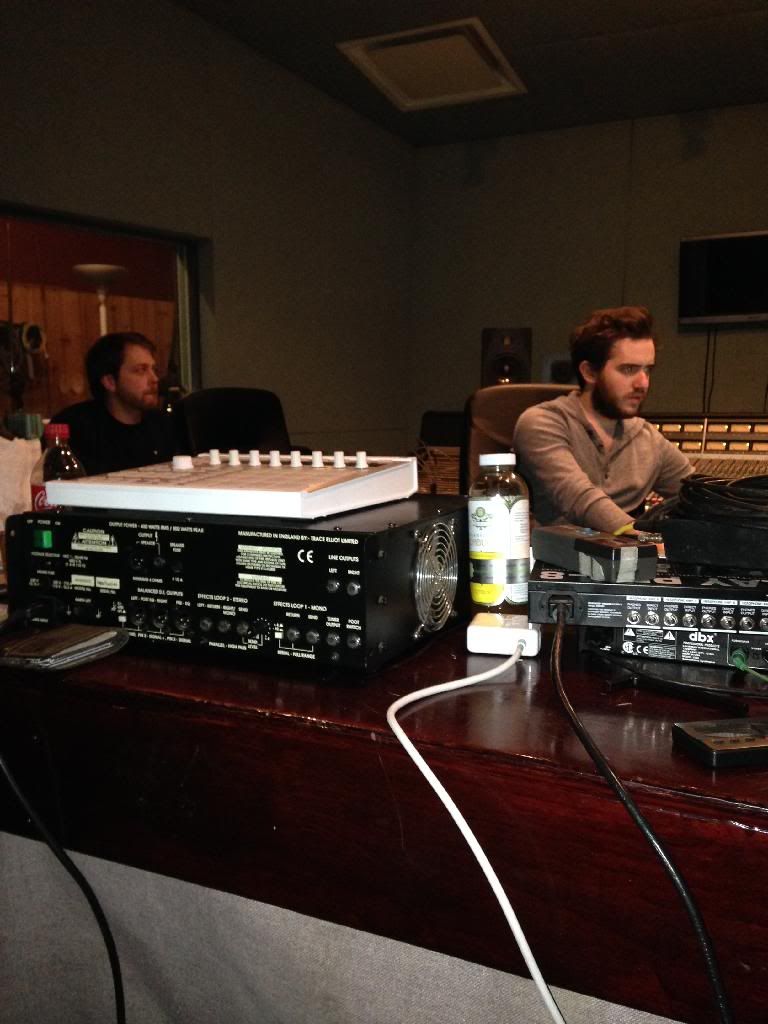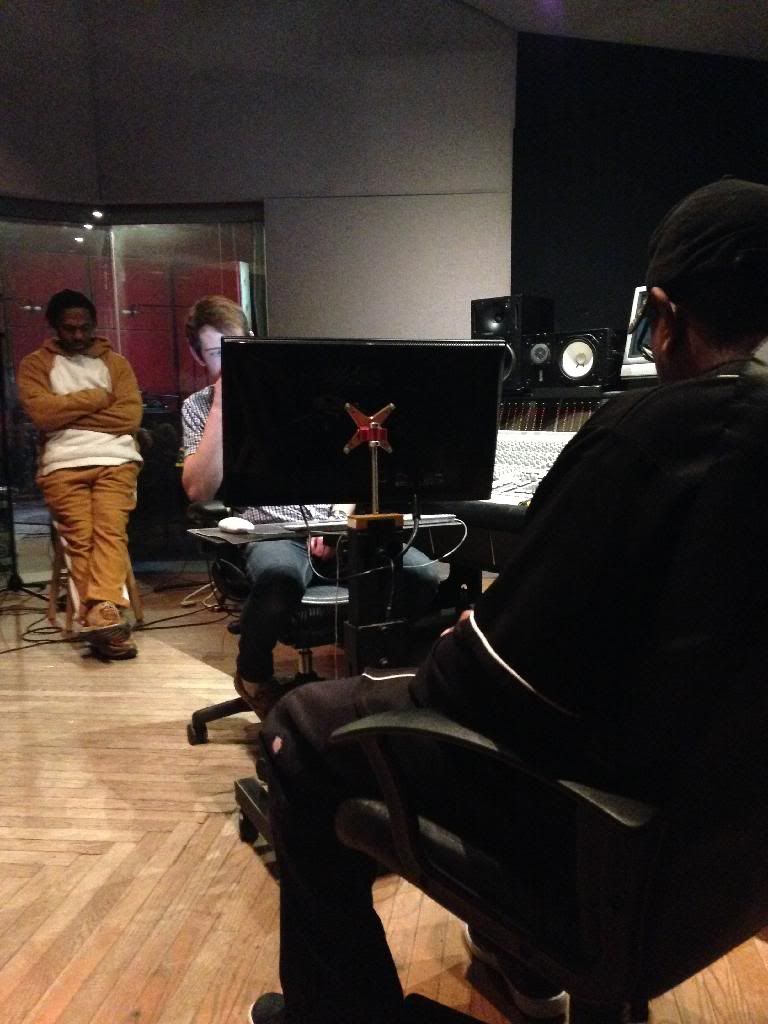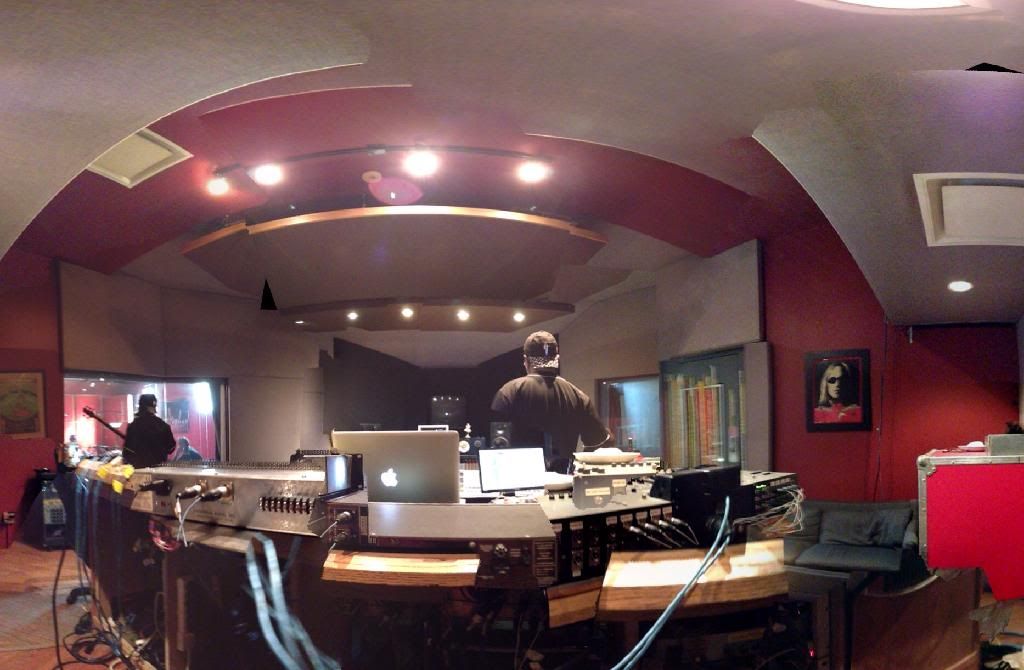Acoustics is the study of how sound waves behave in an environment.
History of acoustics
-The science of production, control, transmission, reception, and effects of sound.
-The qualities that detetermine the ability of an enclosure to reflect sound waves
Marin Mersenne - L'Harmonie Universelle - Oscillation of a stretched string
Production of sound dates back to the 6th century BC in ancient Greece.
Pythagerus observed that when the lengths of vibrating strings are ratios of integers tones produced will be harmonious.
Aristotle understood how sound worked - echo takes place - precurser to reverb. Reverb can be the room or an effect. The speed of sound is about 340 meters per second.
Robert Boyle - sound needs air/liquid to propegate.
Isaac Newton - speed of sound in gases by relating the density and compressability in a medium.
Reception of sound
Athanasius Kircher - first hearing aid - trumpet
1830 Sayert discovered hearing range 8Hz - 24kHz
Seebeck, Biot, Koenig, Helmholtz determined 16Hz - 32Hz. The current general accepted range is 2-Hz - 20kHz.
1840's Toepler, Boltzman, Rayleigh, minimum audible is 20 upa.
Characteristics
Absorption - sound is absorbed by everything, even air.
Acoustic Absorption - medium absorbing sound energy as opposed to reflecting - way sound is absorbed by a particular surface is governed by frequency of the sound, the incident angle of the wave, and the acoustic impedances of both the surrounding air and the surface that it strikes.
In general, soft pliable porous materials are good acoustic absorbers and dense hard impenetrable materials like metal are the most reflective.
The lower the frequency that needs to be absorbed the larger that apparatus needed for absorption.
You can adjust the direct incident angle of sound coming out of a monitor by moving them.
Acoustic attenuation - the measure of energy loss of sound propegating in some media. When sound propegates in medai, there is always a thermal consumption of energy as well as acoustic scattering.
Acoustic impedance (z) - acoustic impedance is the opposition to the flow of sound through some media.
Amplitude - measure of a waves change over a period
Antinode - maximum distance from point of equilibrum.
Compression - the reduction in volume and increase in pressure of the air or other medium - the result of traveling wave compresion and rarefaction.
Crest - point on a wave with the maximum upward displacement within a cycle.
Trough is the opposite of a crest.
Diffraction is the bending of waves around small obstacles and the propegation and spreading through openings and around corners - more pronounced with longer wavelengths.
Diffusion - the tendency for sounds to spread out evenly in a consistent medium.
A more consistent medium means it is more, "diffuse".
An environment with variations would be, "non-diffuse".
Frequency is the number of cycles of an oscillating body per-second - Hz - Hertz - 1 cycle per second.
1 kHz = 1,000 kHz
Harmonics - integer multiples of the fundamental frequency.
Harmonics also differentiate instruments from each other when they play the same fundamental frequency.
Interference is some type of interaction between two or more traveling waves in the same medium.
Constructive interference vs. deconstructive interference
Longitudinal waves - waves whose direction of vibration is the same as their direction of travel - also called compressional waves or compression waves because they produce compression and rarefaction when travelling through a medium.
Medium (pl. Media) - a substance regarded as the means of transmission of a force or effect. With no medium sound transmission is not possible.
Node - point on wave of minimal amplitude
Oscillation - the repetative variation of some measure about a central value or between two or more different states - can be used more specifically to mean mechanical oscillation.
Period - time required for a particle in the medium to make one complete oscillation - seconds/cycle
Audible period is always a fraction of a second - can be measured by any two points that refer to a full cycle
Phase - may indicate from what angle your wave is starting
Phase difference - Difference between two waves of the same frequence and referenced to the same point in time - electric degress or time - 90 degrees or one was out of phase
Antiphase - cancellation of 2 waves that are inverses resulting in destructive interference.
Phase relationship - relative cycle positions of 2 or more oscillating waves
Phase shift - any change that occurs in the phase of one quantity, or in the phase difference between two or more quantities
Reflection - the change in direction of a sound wave due to a change in medium - the angle of incidence equals the angle of reflection
Rarefaction - decrease in density and pressure in a medium, opposite of compression
Refraction - bending of sound when they enter a medium where their speed is different
Scattering - irregular reflection
Sound waves - pattern of disturbance caused by the movement of energy traveling through a medium
Doppler effect - the spread of sound depends on the medium it's passing through
Room Acoustics
Acoustic Interferometer - an instrument for measuring the physical characteristics of sound waves
Beats - a specific type of alternating constructive and deconstructive interference that causes a pulsating 'beat'
fbeat = |f2-f1|
Boundary Effect - when sound encounters a boundary such as a wall - points where the medium suddenly changes - more pronounced with longer wavelengths
the closer you place your monitor to the wall the more bass will be produced
comb filtering - a type of interference where direct sound combines with reflected sound resulting in a 'comb' like pattern onf constructive and deconstructive interference
Flutter echoes - a 'fluttering' effect caused by resonances in high frequency ranges
ear level at one point in an equilateral triangle is the 'listening position'
Listening position - point space where an audio engineer (or other listener) is most likely to be sitting - also called the mix position
low frequency build up - constructive interference in the low frequency spectrum
resonance - a natural frequency of vibration determined by the physical parameters of the vibrating object
colums of air terminate at the boundaries in a room and act as 'resonators'
Room Modes - the collection of frequencies that resonate in a given room
The larger the room the lower the fundamental frequency
most rooms are from 20 Hz to 200 Hz
Sound Pressure Level - SPL - measure of the change in acoustic pressure - measured in (dB)
'zero' = 20upa RMS
Transmission Loss - (TL) - the decrease in acoustic intensity as an acoustic pressure wave propegates outward from a source
TL used to describe rate of acoustic building materials
STC - Sound Transmission Class is a numerical rateing of how well a building partition attenuates airborne sound - ceiling, floor, door rating
Standing Waves - waves that remain in a constant position - resonance is the result of standing waves
Studio Design & Monitoring
A cubic room is a perfect storm of room resonance
Acoustic treatments
Absorbers - any material or structure that is particularly acoustically unreflective
Acoustic foam - open celled lightweight uncompressed material selected/designed for its acoustic applications - doesn't necessarily aim to entirely eliminate resonance , but dampen it, while retaining a live feel - deals more with highs/mids
Bass Traps - low frequency acoustic absorbers - normally in corners - idea is to 'trap' sound - two types - resonating narrow band absorbers and porous broader band absorbers
Porous
-don't need to be calibrated
-tend to be smaller
-easier to build
Resonating Type
-works off modes
Diffusers - structures designed to scatter or disperse acoustic energy throughout a given space
-radiates sound in many directions
-often used to remove coloration and echoes
Monitors - loudspeakers specifically designed for audio production applications
Soft Fit - in wall monitors
-it would be better to have an acousticall optimal room and lower quality speakers than high quality monitors and a bad room
-use multiple speaker sources for cross-referencing
Noam in Studio B working on a track for a Cannes Film Festival submission

tracking Biscuit Miller in Studio A

Biscuit Miller panoramic in Studio A


